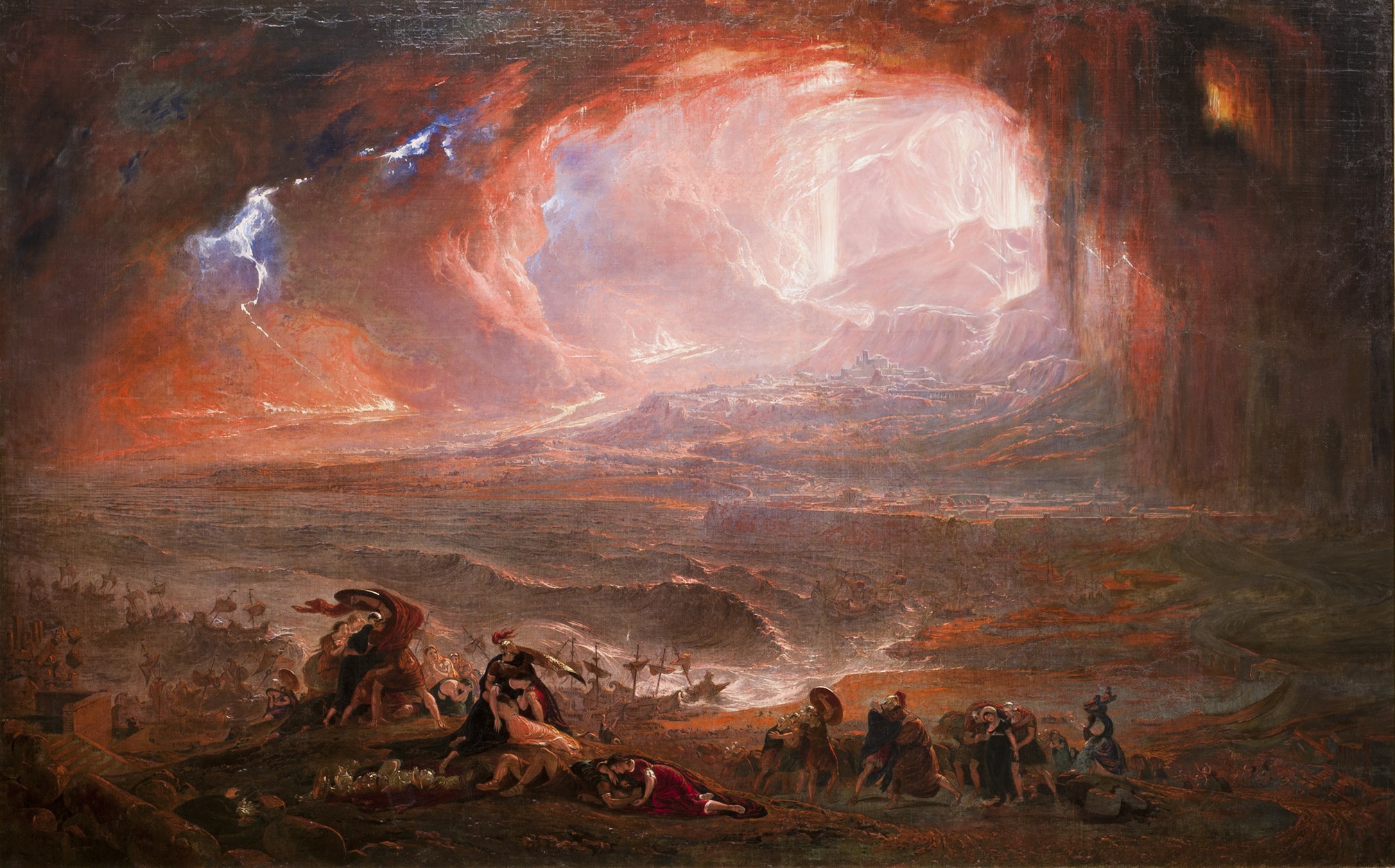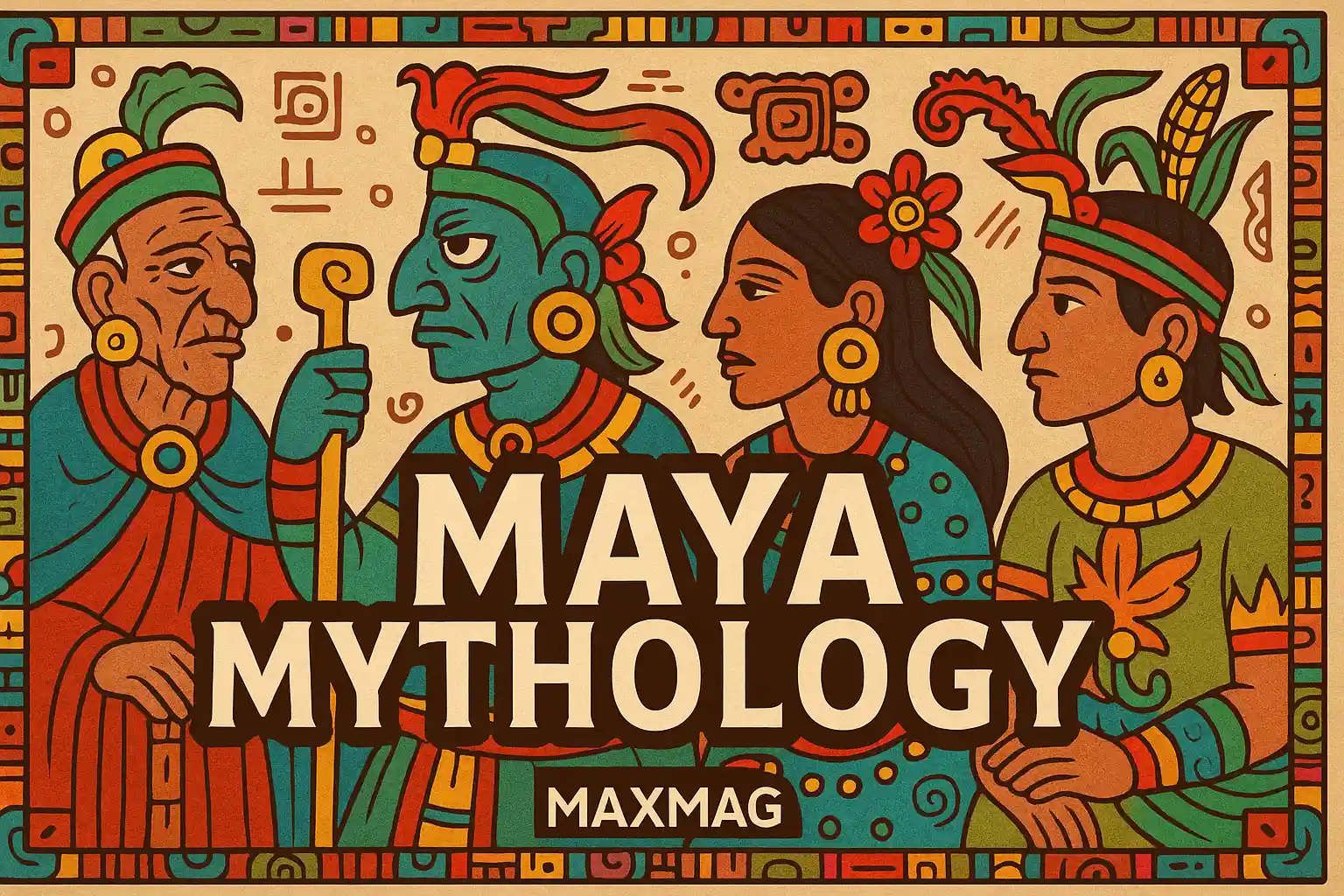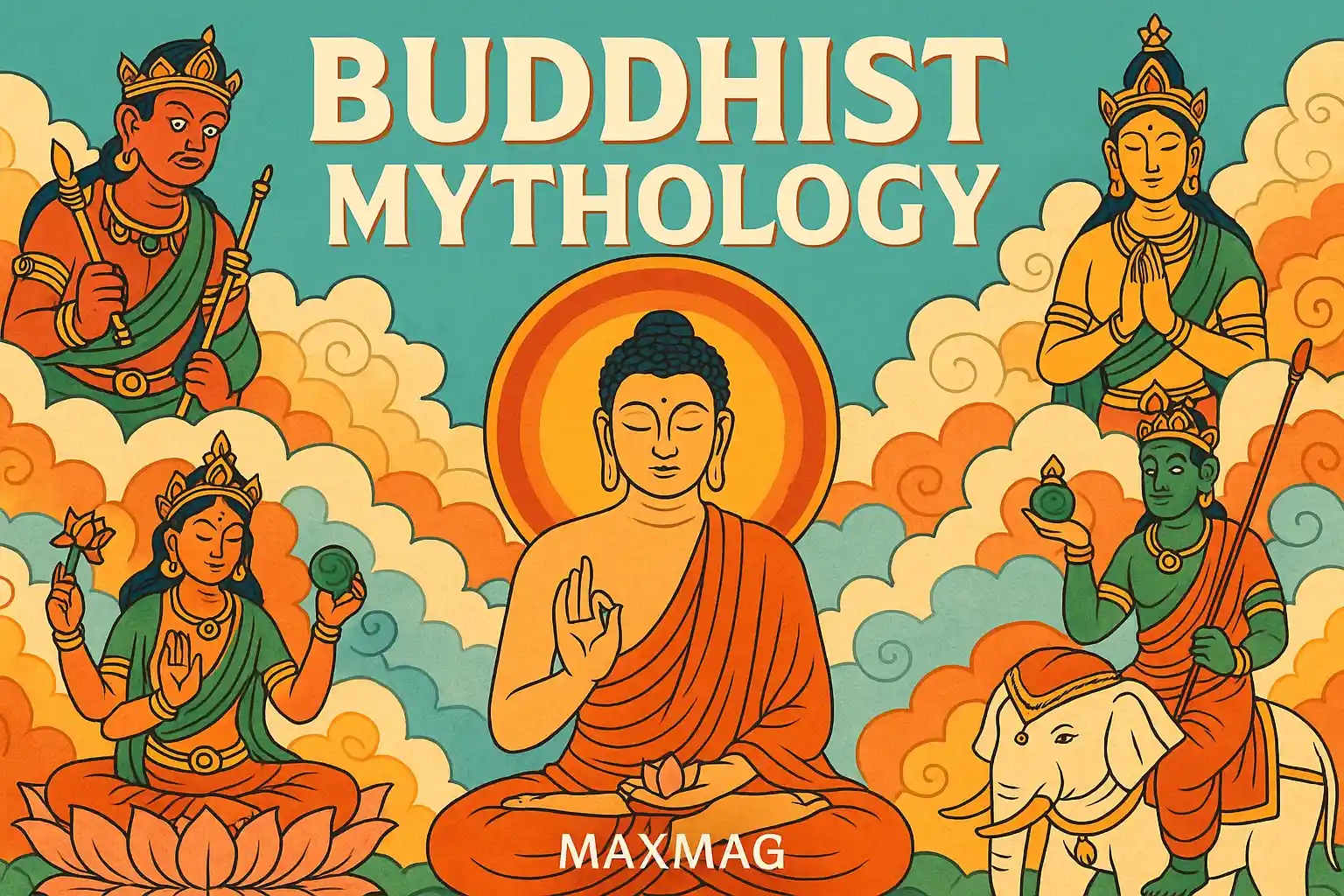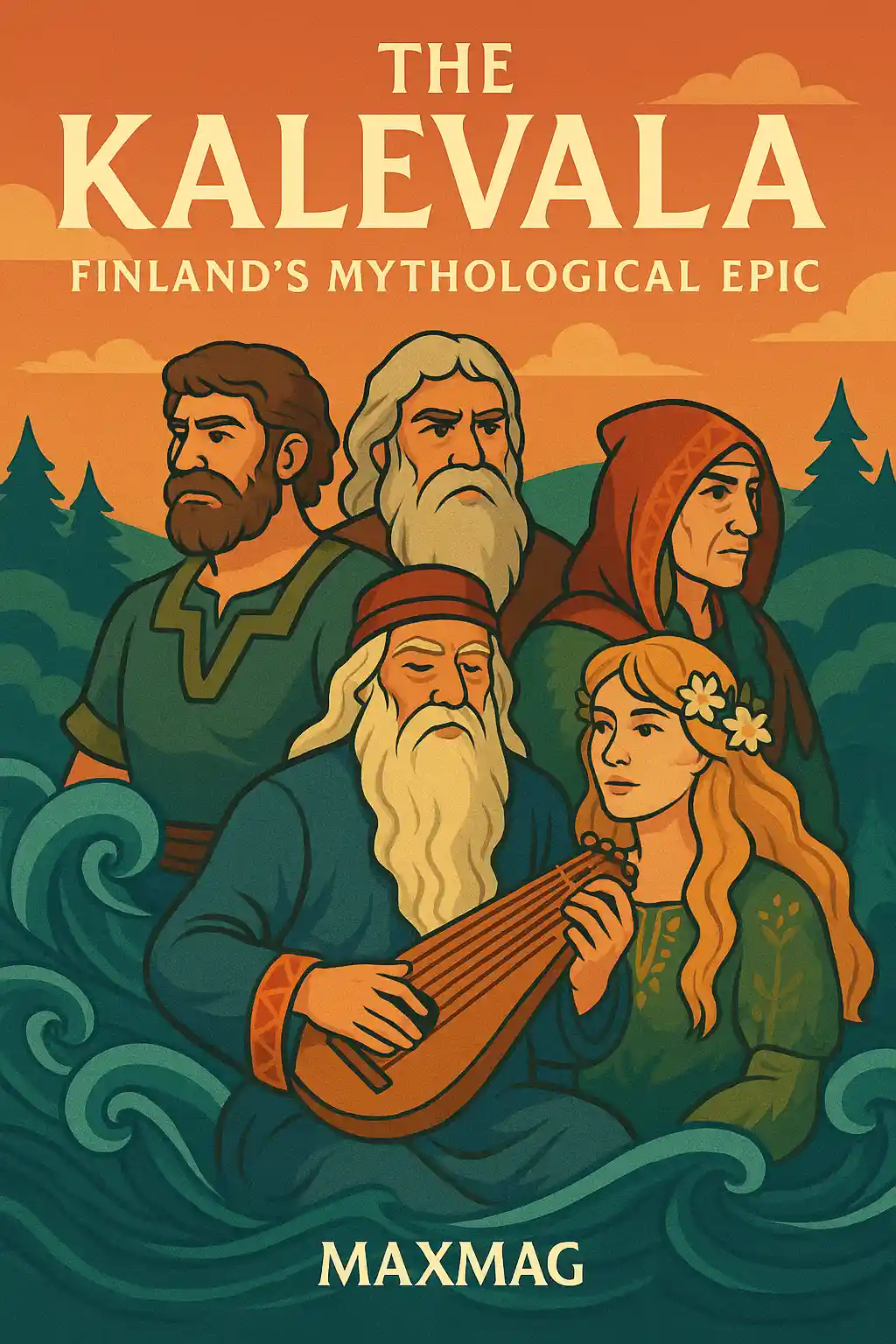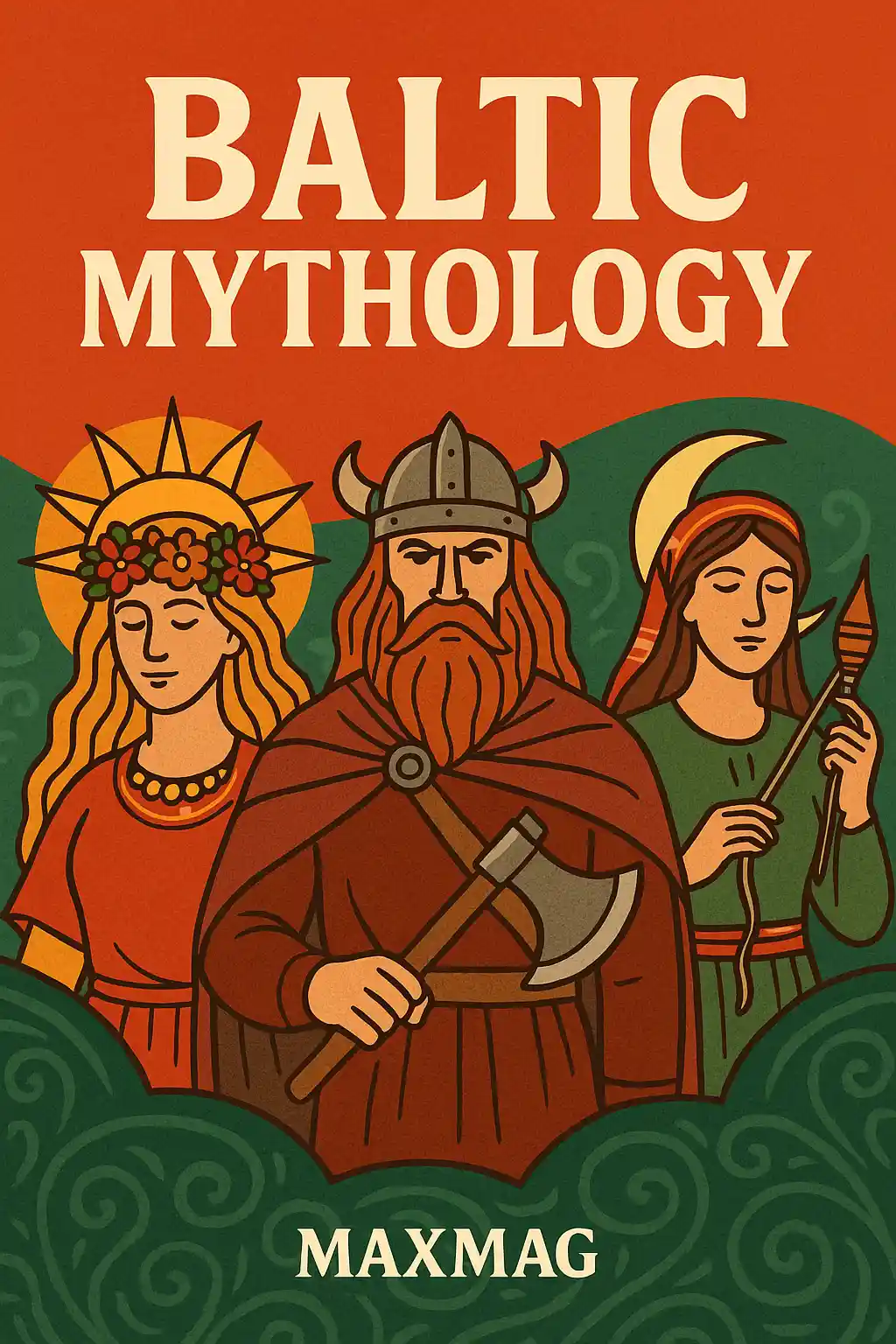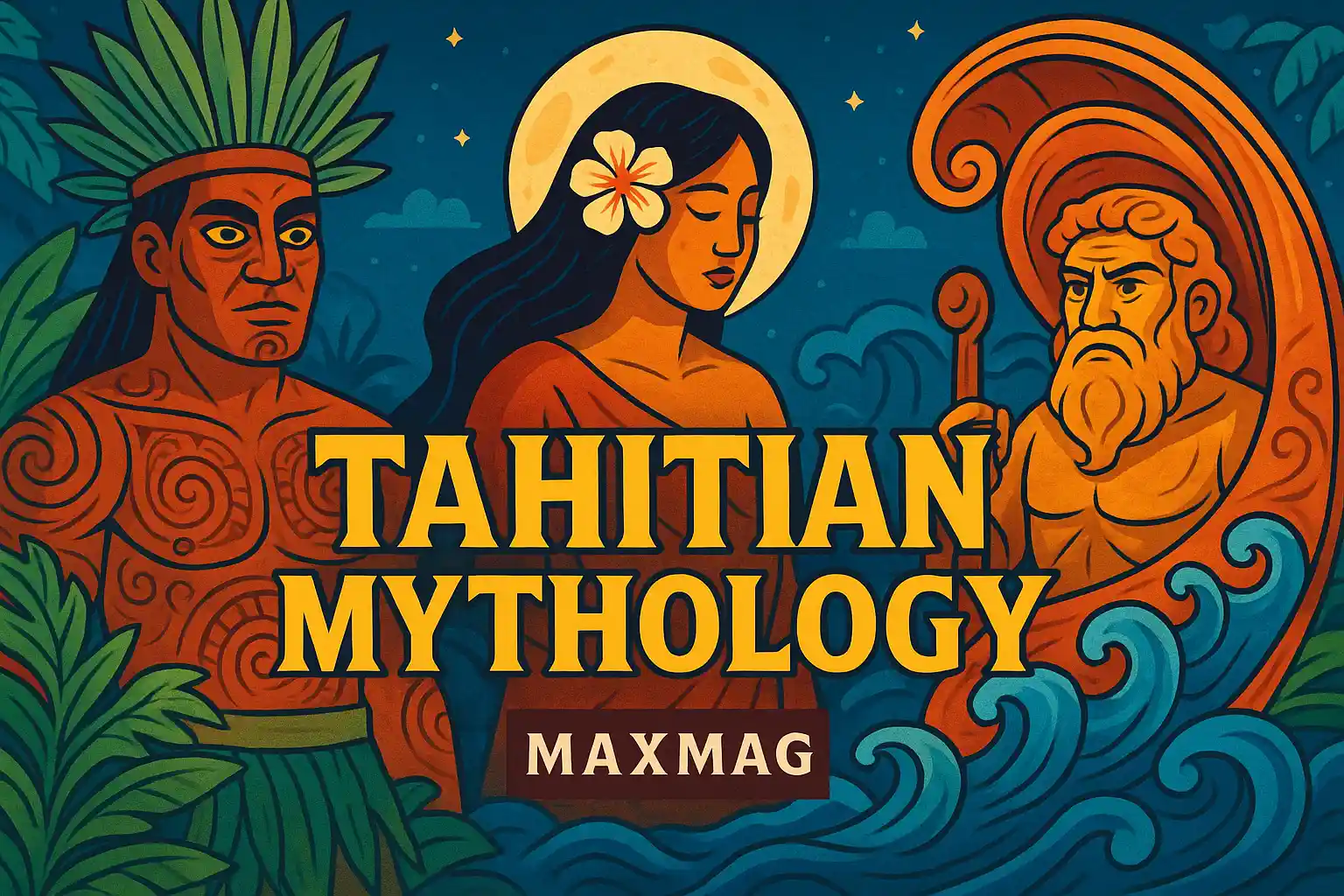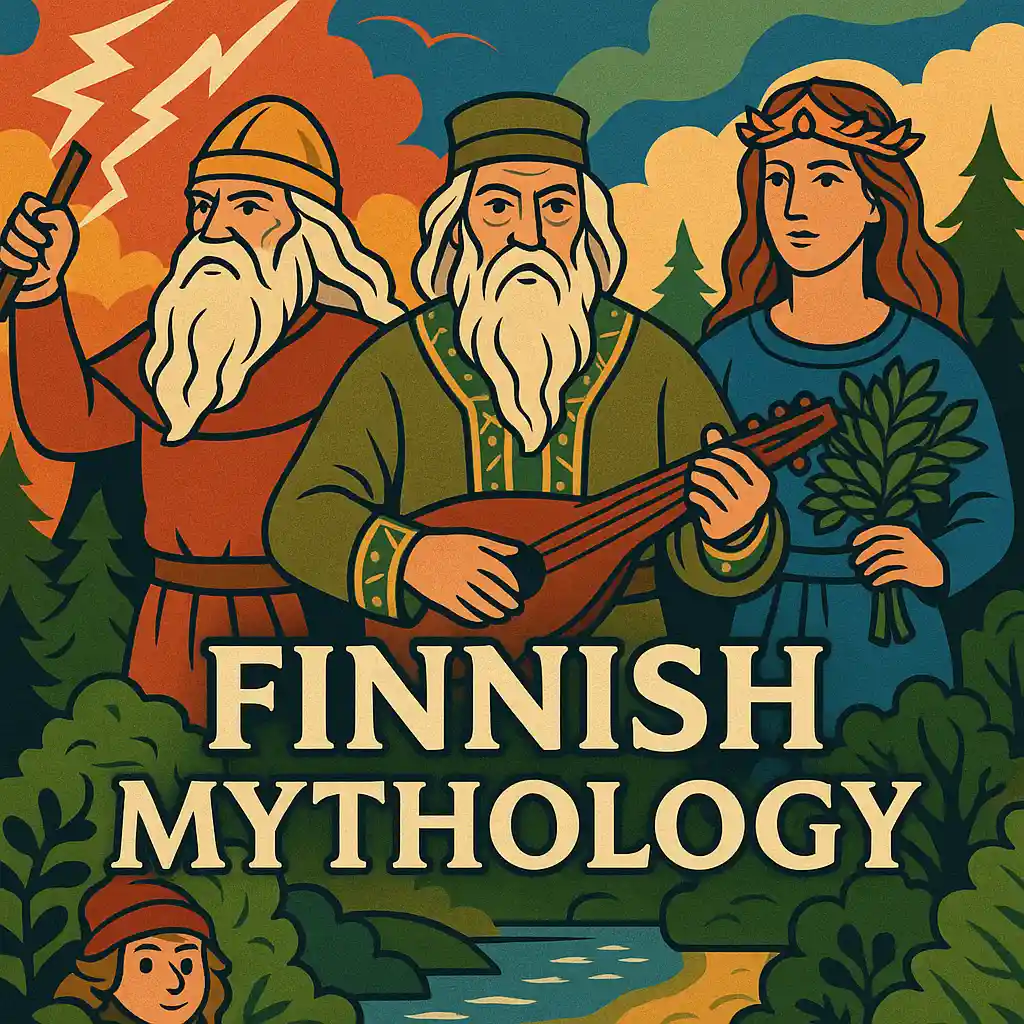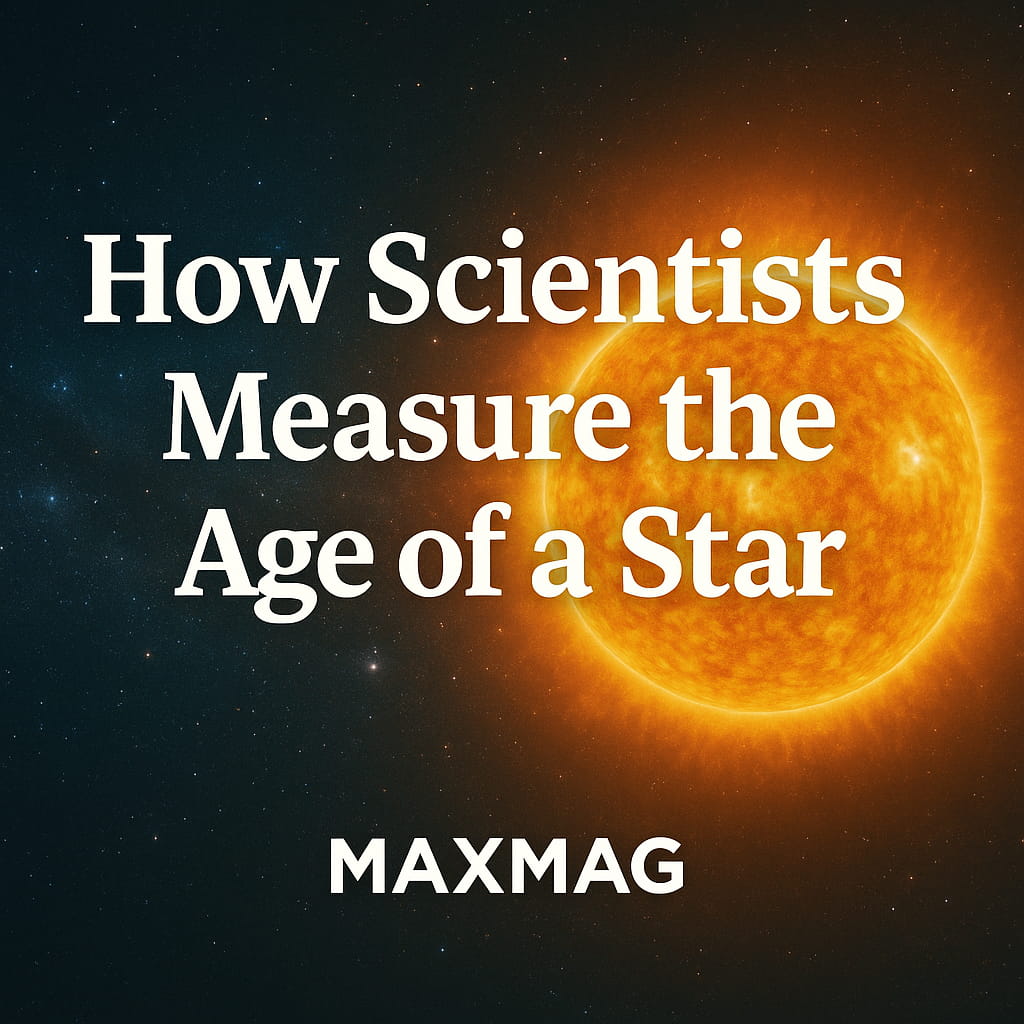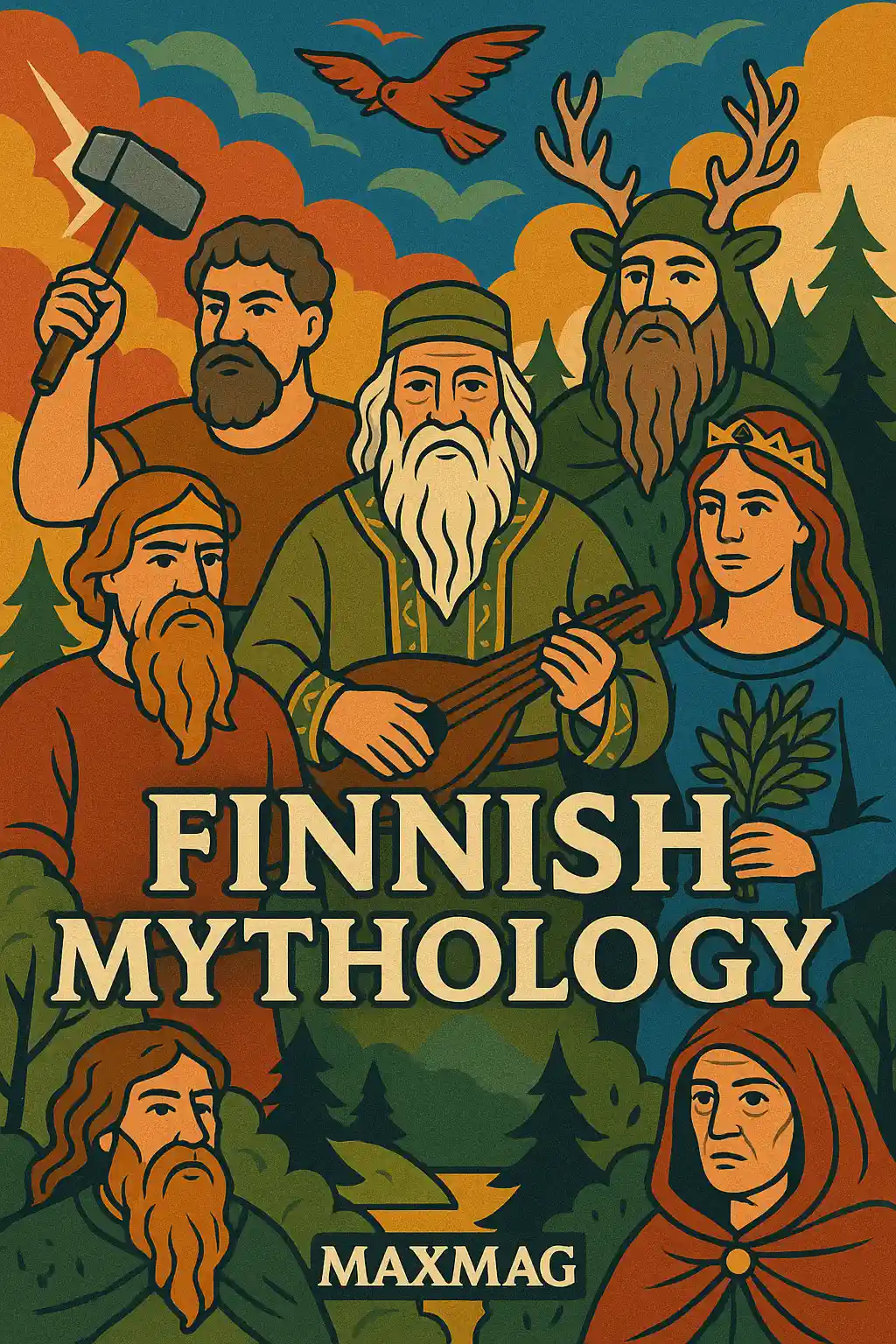
Finland’s deep forests, crystal-clear lakes, and endless winter nights have given rise to one of Europe’s most haunting and beautiful mythologies. Finnish Mythology is a poetic, nature-centered belief system rooted in oral tradition and shamanic practices. It is a spiritual world where gods, spirits, and humans coexist in a universe held together by song, memory, and respect for nature’s rhythms. While less known globally than Greek or Norse traditions, Finnish myths hold a unique place among world mythologies, combining mysticism with earthy wisdom.
These tales, once shared around fires in log cabins under the Northern Lights, are now seeing a global resurgence. Artists, scholars, and spiritual seekers alike are turning to Finnish Mythology to explore a worldview that reveres the natural world and celebrates the power of song and storytelling. With growing environmental awareness and interest in indigenous wisdom, this ancient tradition is more relevant today than ever before. The following deep dive brings you into the heart of Finland’s mythic legacy—from its deities and cosmology to its enduring influence in modern culture.
Origins of Finnish Mythology
The roots of Finnish Mythology go back thousands of years, long before Finland became a nation-state. This spiritual framework emerged among the Finno-Ugric peoples—an ancient ethno-linguistic group that also includes Estonians and Hungarians. Their cosmology blended animism, totemism, ancestor worship, and elemental reverence. Unlike Indo-European mythologies, which often focus on hierarchical pantheons and heroic battles, the Finnish worldview is more cyclical and nature-centric.
Finnish myths were passed down orally, in poetic verse, for generations. The stories were preserved by rune-singers, who memorized thousands of lines of verse and recited them during communal gatherings. These oral epics were eventually compiled into written form in the 19th century by physician and folklorist Elias Lönnrot. His masterpiece, The Kalevala, synthesized hundreds of regional tales into a cohesive national epic, transforming regional spirituality into a shared cultural treasure. It became a cornerstone of Finnish identity during the national awakening and inspired works by composers like Sibelius and authors like Tolkien.
The richness of Finnish Mythology lies not only in its deities but also in its worldview—where language shapes reality, and the human soul is intertwined with lakes, forests, and celestial bodies. These stories were not entertainment alone; they were maps for healing, farming, birth, and death. Even today, the rhythmic chant-like structure of these verses is preserved in traditional folk music and shamanic practices, marking a continuum of belief that spans centuries.
Core Themes of Finnish Mythology
One of the most striking aspects of Finnish Mythology is its ecosystemic spirituality. Everything in nature—from animals to weather patterns—was believed to be animated by a spirit or god. Trees had souls. Rocks could remember. The wind could whisper secrets. This animistic worldview shaped how early Finns interacted with their environment and conducted rituals. The boundary between the visible and invisible worlds was porous, and the role of the tietäjä (wise person or shaman) was to mediate between them.
Cosmic dualities feature prominently, though not always in a good versus evil context. Instead, the myths speak of balance—light and shadow, summer and winter, creation and decay. Another dominant theme is the power of words. In Finnish lore, spoken words, especially in the form of songs or incantations, are believed to hold magical power. A skilled singer could stop a bear or raise the wind simply through verse. This belief echoes ancient shamanic practices found among other Arctic cultures like the Sámi.
Stories also revolve around quests—not just for treasure or revenge but for knowledge, creation, and balance. These mythic journeys are often circular rather than linear, reflecting the cyclical patterns of nature. For instance, the forging and theft of the Sampo—a magical object that brings fortune—becomes a metaphor for the constant cycle of gain and loss, creation and destruction. These themes resonate with modern psychological interpretations and environmental ethics, giving these old stories new relevance.
Major Deities and Spiritual Beings
Unlike some mythologies with a rigid pantheon, Finnish Mythology presents a dynamic world of gods, spirits, and legendary figures that often blur the lines between divine and mortal. Each figure represents a force of nature or a universal principle, and their stories are often metaphors for the rhythms of the natural world.
Väinämöinen: The Eternal Sage
Väinämöinen is perhaps the most beloved figure in Finnish mythology—a shamanic bard, wise man, and magician who was born before the earth was fully formed. He represents wisdom, knowledge, and the transformative power of song. He can charm fish from the sea and lull enemies to sleep using poetry. His journeys often reflect spiritual enlightenment and the quest for deeper truth. Väinämöinen is also a central character in The Kalevala and remains a symbol of national pride in Finland.
Ilmarinen: The Divine Smith
Ilmarinen is the celestial blacksmith and brother-like companion to Väinämöinen. He forges the magical Sampo, which can grind out salt, grain, and gold, ensuring prosperity. Ilmarinen’s story highlights the theme of human creativity and the double-edged nature of technology—what is created for good can also be desired, stolen, or misused. His romantic failures and tragic experiences add layers of humanity to his otherwise divine skills.
Ukko: The Sky Father
Ukko is the Finnish god of the sky, thunder, and fertility. He governs storms, crops, and rain, and is sometimes compared to Norse Thor or Slavic Perun. However, Ukko is less combative and more paternal. His weapon, the ukonvasara (hammer of Ukko), creates thunder and symbolizes the raw power of nature. People would offer beer during midsummer festivals to honor him and ensure good harvests.
Tapio and Mielikki: Lords of the Forest
Tapio is the forest king, a majestic being with a beard of moss and eyes like deep woodland. Mielikki, his consort, is the goddess of the forest and hunt. She heals injured animals and protects respectful hunters. These spirits were crucial in a society that depended heavily on forest resources. Hunters would often pray or offer tokens to these deities before venturing into the woods. Together, they reflect the sacredness of wild spaces.
Louhi: The Witch Queen of the North
Louhi, ruler of the frigid realm of Pohjola, is one of the most complex figures in Finnish Mythology. She is both feared and revered. Skilled in magic and shapeshifting, Louhi guards the Sampo and commands monstrous beasts. While often cast as an antagonist, she is also a wise matriarch and a powerful sovereign in her own right. Her depiction challenges simplistic notions of good and evil and reflects the ambivalence of nature itself—beautiful and terrifying, fertile and cruel.
The Cosmic Structure of Finnish Mythology
The Finnish cosmos is envisioned as a world tree, known as maailmanpuu, which connects the sky, earth, and underworld. At the top of the tree dwell the celestial gods and spirits. The trunk represents the human realm, and the roots stretch into Tuonela, the land of the dead. This structure mirrors similar ideas in neighboring mythologies, such as the Norse Yggdrasil, though the Finnish version is more fluid and less militaristic.
Spiritual practitioners, especially tietäjät, performed rituals and chants to journey between these realms. They might use a drum, trance, or sacred herbs to enter altered states of consciousness. In this way, they could retrieve knowledge, heal the sick, or speak with the deceased. These soul journeys weren’t considered fantasy—they were an accepted part of communal life and healing.
The river of Tuoni, which divides the world of the living from the dead, is a recurring motif in Finnish death mythology. Souls had to cross it, often blindfolded or guided by ancestral spirits. This reflects a belief that death is not an end but a transition—one requiring respect, ritual, and preparation.
For a broader comparison, it’s valuable to explore how the Norse perceived their cosmos in the article on Norse Vikings Mythology, which shares some symbolic similarities but leans more heavily on themes of war, prophecy, and apocalypse.
The Kalevala: Finland’s Mythological Epic
Compiled in the 1830s and 1840s, The Kalevala is the lifeblood of Finnish Mythology. It draws from over 60,000 lines of runo verse collected from across rural Finland and Karelia. The structure of the poems—rich in alliteration, parallelism, and rhythm—preserved the oral traditions of generations and codified the mythological canon into one continuous narrative.
Major events in The Kalevala include:
-
The cosmic egg hatching the universe.
-
The forging, theft, and eventual destruction of the Sampo.
-
Lemminkäinen’s death and resurrection.
-
Kullervo’s tragic vengeance tale.
-
Väinämöinen’s departure to unknown lands, leaving hope for his return.
The Kalevala influenced more than just Finnish identity. J.R.R. Tolkien openly acknowledged its impact on his creation of Middle-earth. Additionally, it has inspired operas, paintings, and even modern fantasy role-playing games. The Finnish government and institutions like the Library of Congress recognize the Kalevala as an essential cultural artifact [^1].
Mythical Beings and Folk Spirits
In addition to gods, Finnish folklore is brimming with spirits and creatures that interact with humans in daily life. These beings reflect the Finns’ close relationship with nature and serve both moral and practical roles in society.
Haltija: Guardians of Place
Haltijas are guardian spirits attached to a place, person, or object. Every home, farm, or forest might have its own haltija. If treated with respect—through clean spaces, offerings, and positive intent—these spirits would bring luck and protection. If neglected, they could turn mischievous or malevolent.
Näkki: The Lurking Water Spirit
Näkki is a shape-shifting creature that lives in lakes, rivers, or wells. Often used to warn children not to play near dangerous water, the näkki can appear beautiful or terrifying. Stories of näkki echo water spirits from other cultures, like Slavic rusalki or Celtic kelpies, showing a shared human concern with the mysteries of deep water.
Hiisi: Demonic Forces
Originally sacred forest groves, the term hiisi evolved into a label for cursed or evil entities. Hiisis became bogeymen in Christianized Finland, often blamed for illness or disaster. This transformation reflects the cultural shift from animism to monotheism, as old gods were demonized to fit new theological frameworks.
Menninkäinen: Gnome-like Forest Spirits
Menninkäiset are small, elusive beings who live in forests and sometimes assist or trick humans. They represent the unknowable and unpredictable aspects of the natural world. Encounters with them often carry moral lessons about humility, honesty, and respecting the unseen.
Finnish Mythology in Modern Times
Today, Finnish Mythology is more alive than ever, even if not in the form of religious practice. Artists, musicians, and scholars continue to draw on its themes. Bands like Amorphis base albums on Kalevala stories, and visual artists reinterpret deities like Mielikki and Louhi as symbols of environmental consciousness.
Academic institutions such as the American Folklife Center at the Library of Congress offer accessible archives and resources to those studying Finnish spiritual heritage. In Finland, museums like the National Museum and local folklore festivals ensure that ancient traditions remain visible and respected.
There’s also growing interest among neo-pagans and animists in reconstructing or reimagining Finnish spiritual practices. These revivals are often coupled with ecological activism and cultural preservation, making mythology not just a story of the past but a tool for the future.
Role of Women in Finnish Mythology
Finnish Mythology, unlike many patriarchal systems, includes strong female figures. Characters like Louhi, Mielikki, and even unnamed forest spirits wield power in domains of magic, healing, and leadership. Women were often considered keepers of oral traditions and spiritual songs, passing them to the next generation. This suggests a more egalitarian spiritual structure where both genders contributed to myth-making and ritual.
Seasonal Cycles and Agricultural Lore
The mythological calendar was intertwined with agricultural cycles. Midsummer (Juhannus) and winter solstice carried great spiritual significance, often marked with bonfires, offerings, and songs. Seasonal changes were seen not just as physical shifts but as movements within the spiritual world. Crops depended on divine favor, and rituals to honor Ukko or appease land spirits were common among early Finnish farmers.
Influence Beyond Finland
Though deeply Finnish, this mythology influenced global culture. From Tolkien’s Elvish languages to Carl Jung’s mythic archetypes, echoes of the Finnish spirit can be found in unlikely places. The myth’s focus on balance, nature, and inner knowledge has made it a valuable source for environmental literature, psychology, and even design philosophy.
Frequently Asked Questions about Finnish Mythology
Q1: What are the main deities in Finnish Mythology?
Q2: What is the Kalevala and why is it important?
Q3: Is Finnish Mythology still practiced today?
Q4: How does Finnish Mythology compare to Norse Mythology?
Q5: What creatures appear in Finnish myths?
Q6: Are there any modern sources to learn more?
Hidden Mentions

